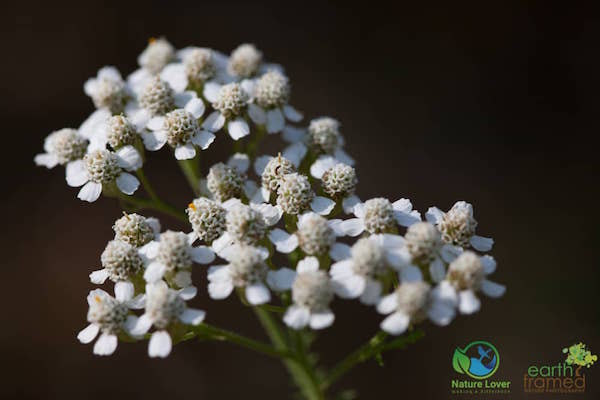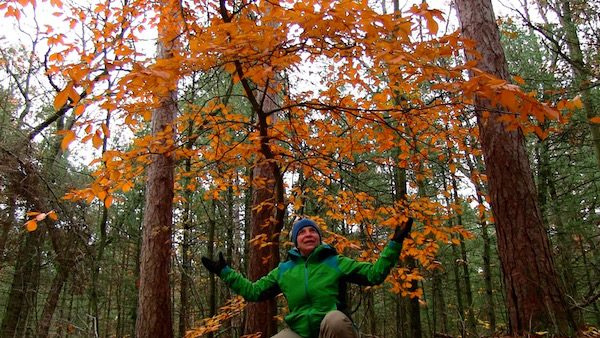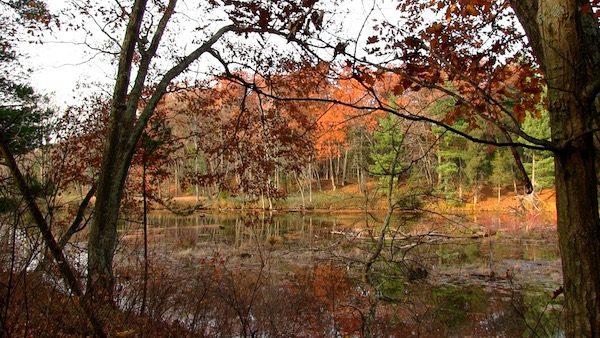The Pinery Provincial Park is one of our favourite places to take a day trip. Less than an hour from home we can spend the better part of the day at the park, or even just part of the day. Having the annual Provincial Park Pass allows us, and encourages us, to venture up to the Pinery as often as we’d like.
The park offers a variety of things to do and see in every season, including the fall. The park is open year-round to day visitors and to campers. Starting after the Thanksgiving weekend parts of the part will be closed during the winter season.
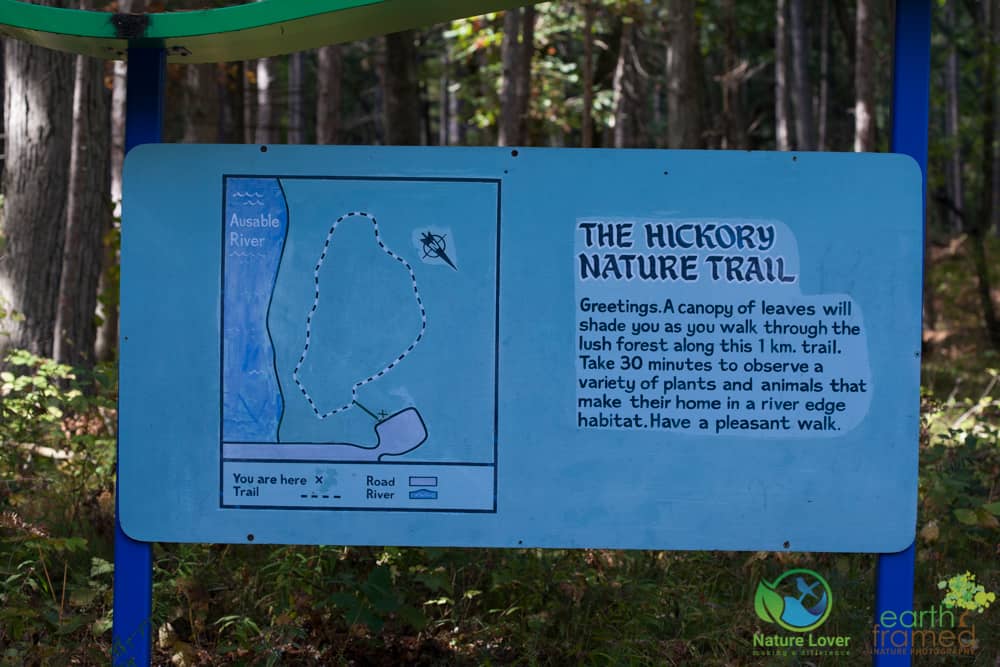 You’ll notice that there are new signs at each of the trail heads but during this trip, in 2014, they were still sporting the older style ones. The signs have been updated to more accurately describe the trails with information on the flora and fauna you’ll see. The Hickory Trail will take you through the forest and out onto a platform at the edge of the Ausable River.
You’ll notice that there are new signs at each of the trail heads but during this trip, in 2014, they were still sporting the older style ones. The signs have been updated to more accurately describe the trails with information on the flora and fauna you’ll see. The Hickory Trail will take you through the forest and out onto a platform at the edge of the Ausable River.
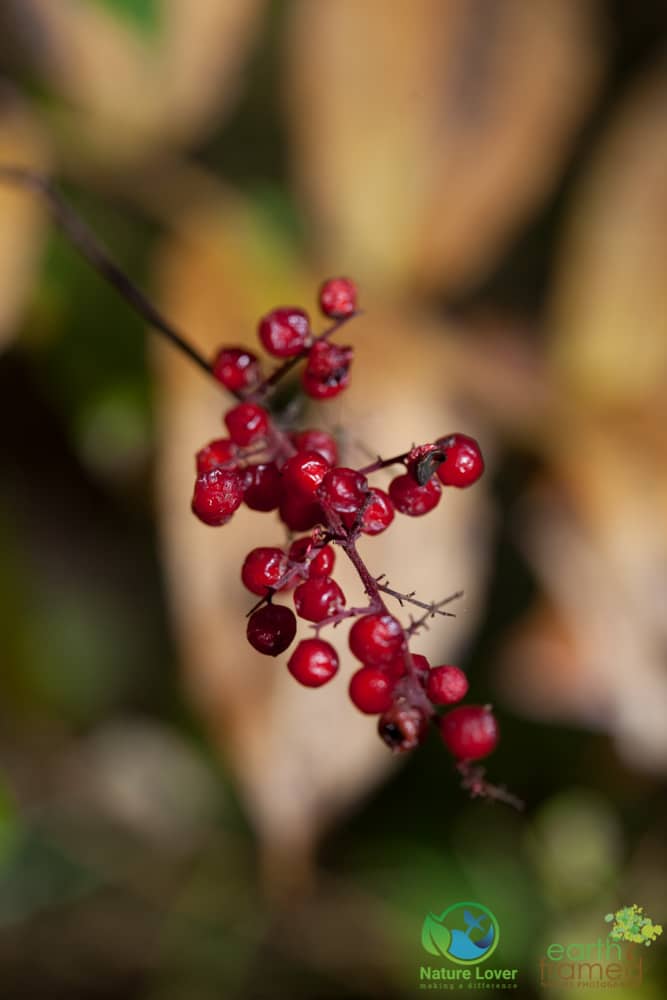
Later in the season you’ll find a variety of plants that have either gone to seed or are displaying their fruit in vibrant colours.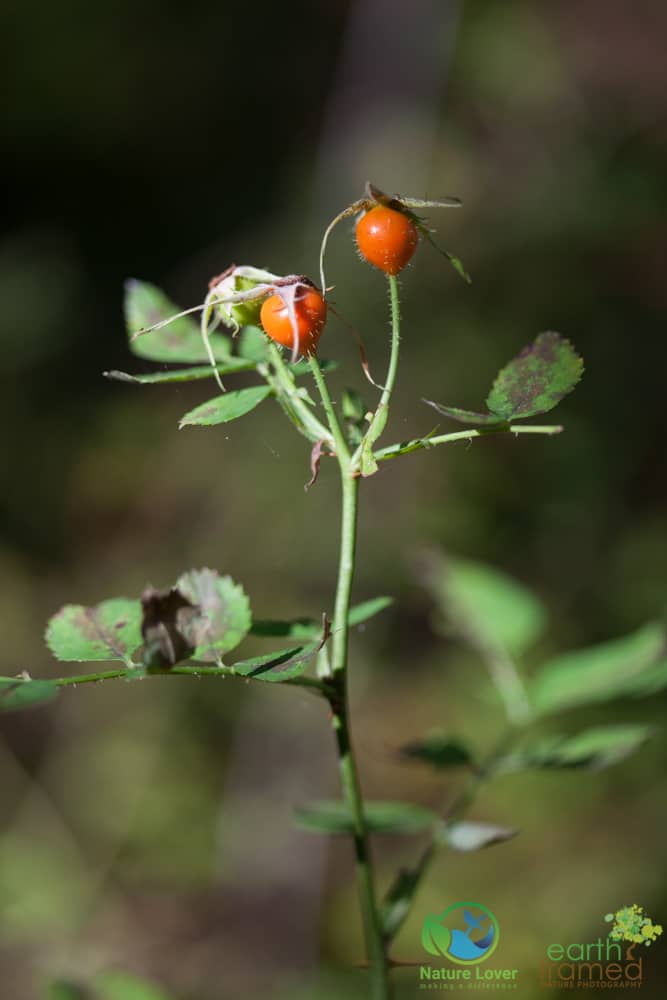
Did you know that wild rose hips are a fantastic winter food for birds and mammals such as waxwings, pine grosbeaks, grouse, rabbits, coyotes and skunks? 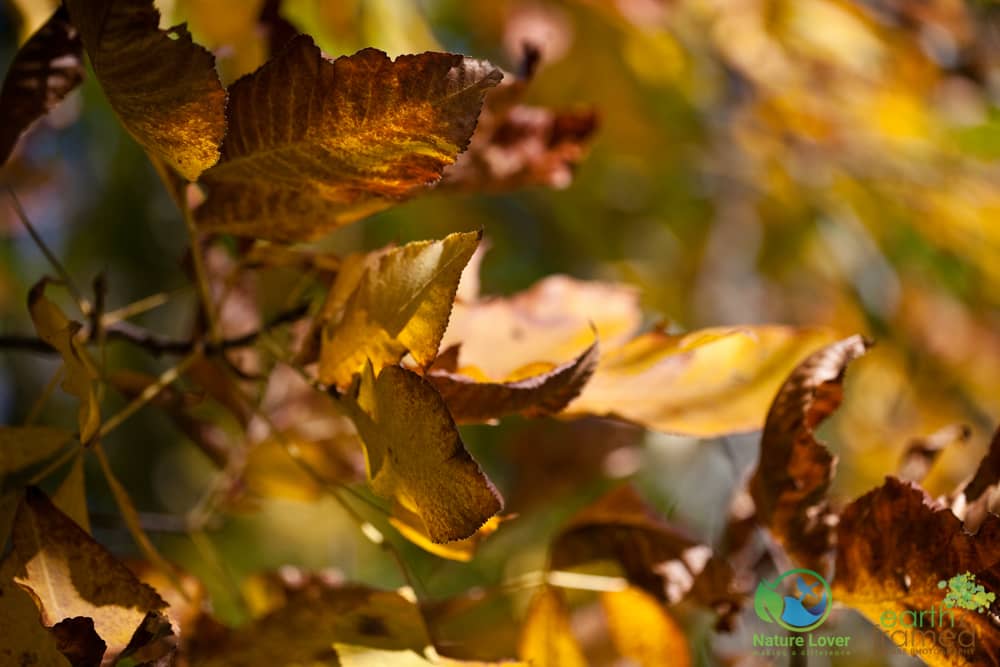
The leaves were changing in October and although the Pinery doesn’t have a lot of maples, the yellows and oranges are still spectacular. 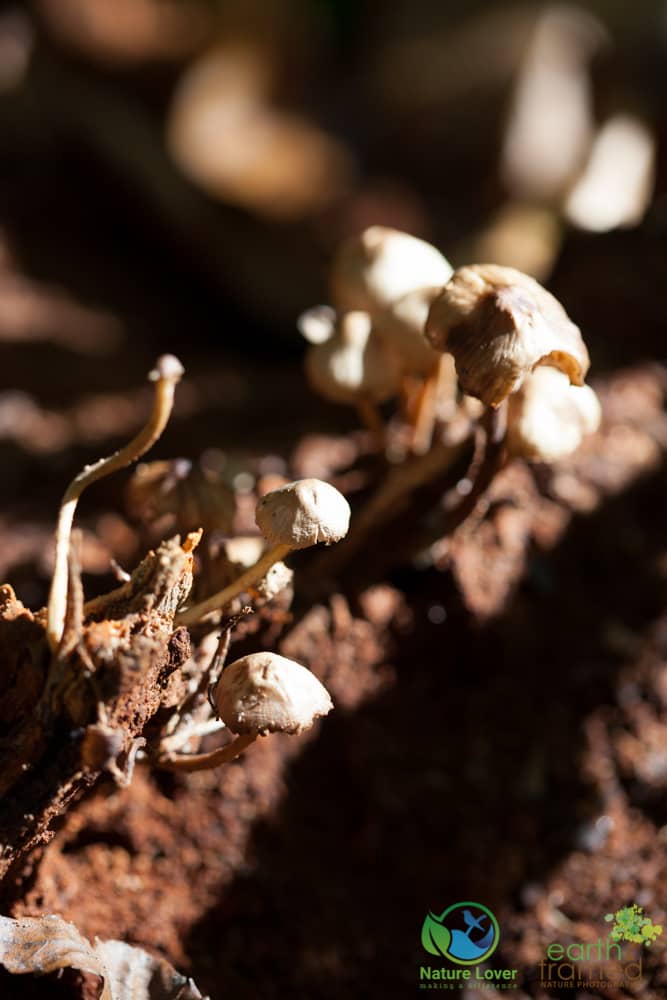
There are always a lot of mushrooms of all different shapes and sizes at the Pinery. These ones were drying out on the side of a decomposing log and were beautifully lit.
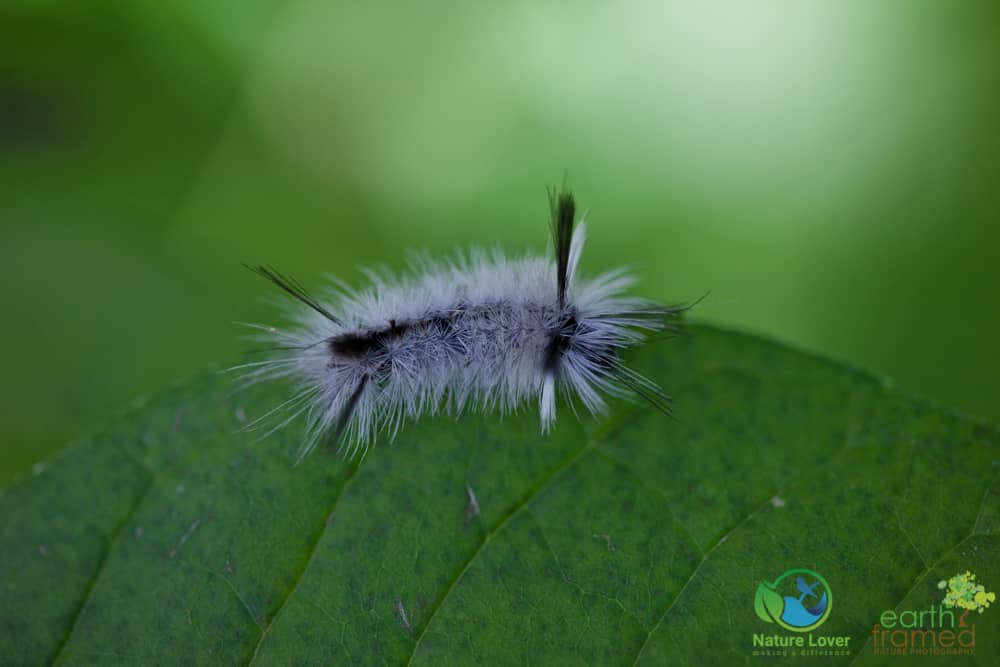
While you’re hiking to be sure keep your eye out for caterpillars on leaves, limbs and the ground. This Banded Tussock Moth caterpillar, otherwise known as a Pale Tussock Moth, was spotted hanging out on a leaf. This species is in its larvae stage from July to October and feed on a large number of trees: alder, ash, birch, elm, hazel, hickory, oak, poplar, tulip tree, walnut and willow.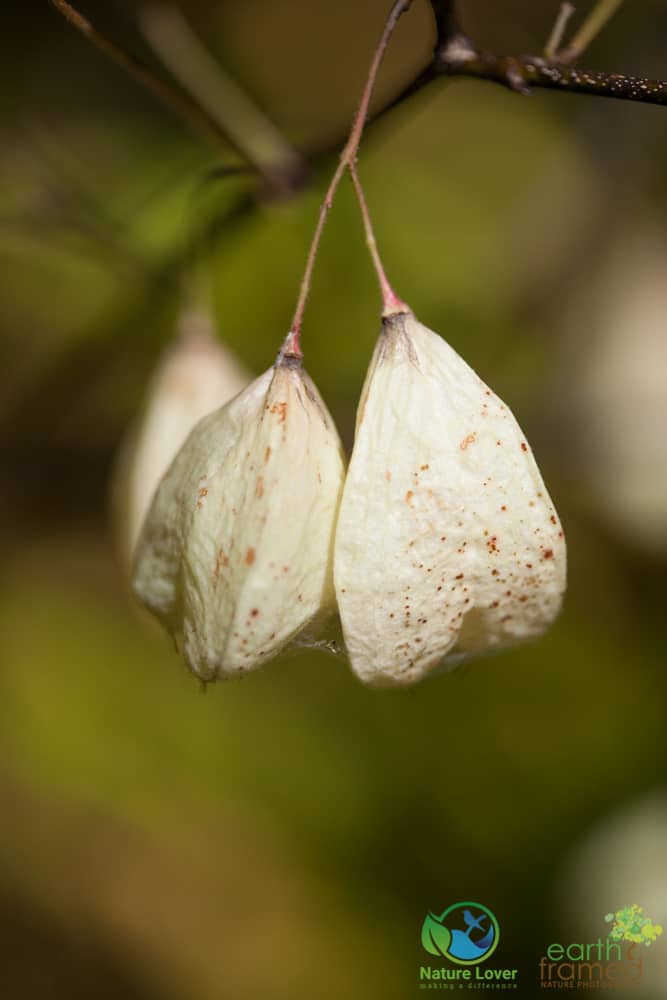
We love the fruit of the American Bladdernut Shrub. If you can find one that has dried out on the shrub you can shake it like a little natural hand percussion instrument! You can find a patch of these shrubs along the water’s edge on the Hickory Trail.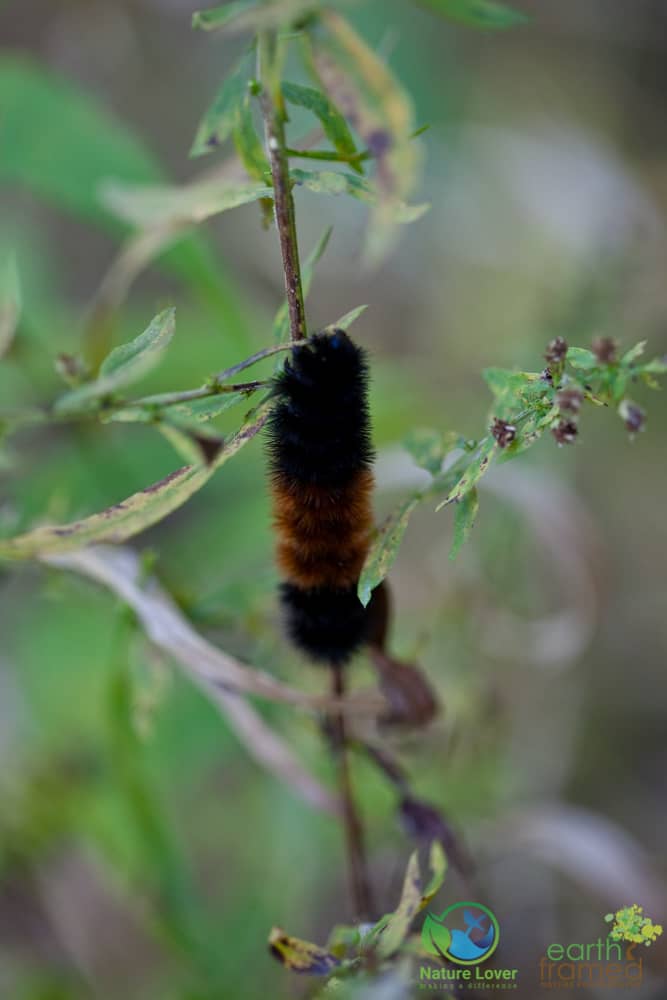
Along the way we came across several Woolly Bear Caterpillars (Isabella Tiger moth larvae). The one pictured above is a fairly young one since it still has a lot of black. The older the caterpillar is, the more reddish it will become. These larvae can be found on a wide variety of host plants, including asters, birch, clover, corn, maples and sunflowers.
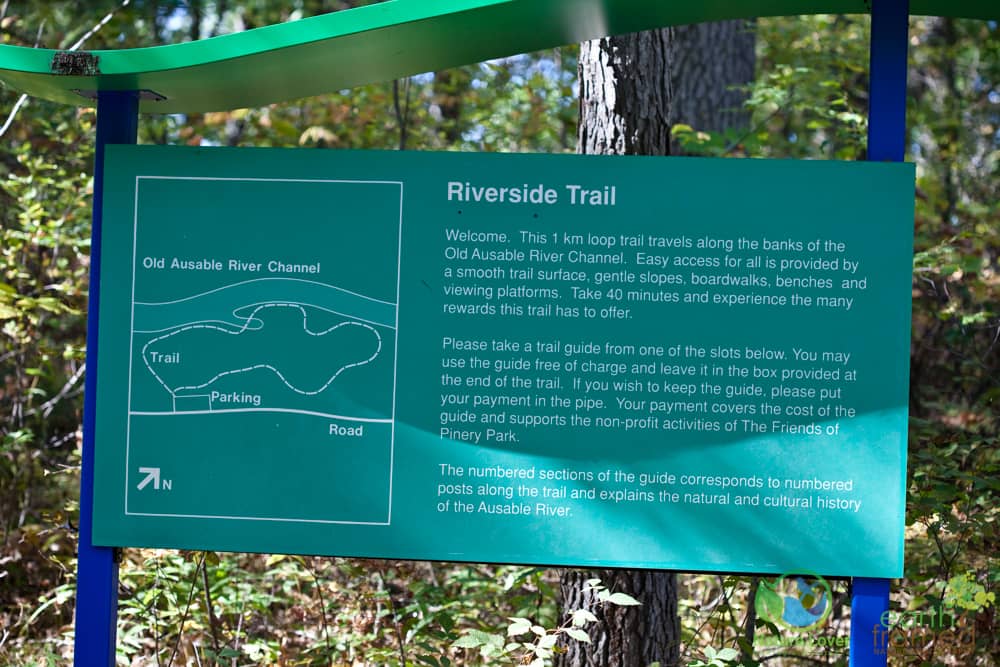
The Riverside Trail sign has also changed since this image was taken in 2014. Signs change for a lot of reasons, maybe it fades, the information changes or the park gets some extra money. The Pinery used to offer paper trail guides that you could borrow, as the sign suggests, but they have since gone to digital ones. Makes sense since the paper ones can get damaged and trails change over time. 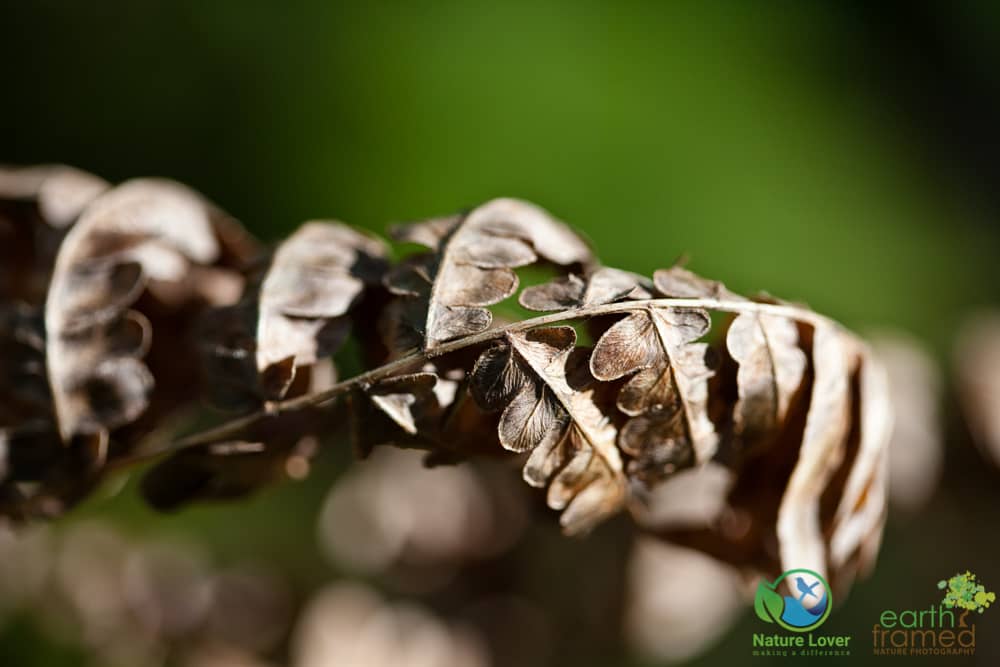
Fall was definitely moving in with the leaves changing colours, the plants going to seed and others, like this fern, drying up.
Check out this Running Strawberry-bush, otherwise known as a Running euonymus. It’s so unique with its pink fruit capsule and dangling red seed, which is poisonous, so don’t eat it! General rule in nature is don’t eat anything unless you are absolutely sure it is edible. And usually, red is a warning colour in nature.
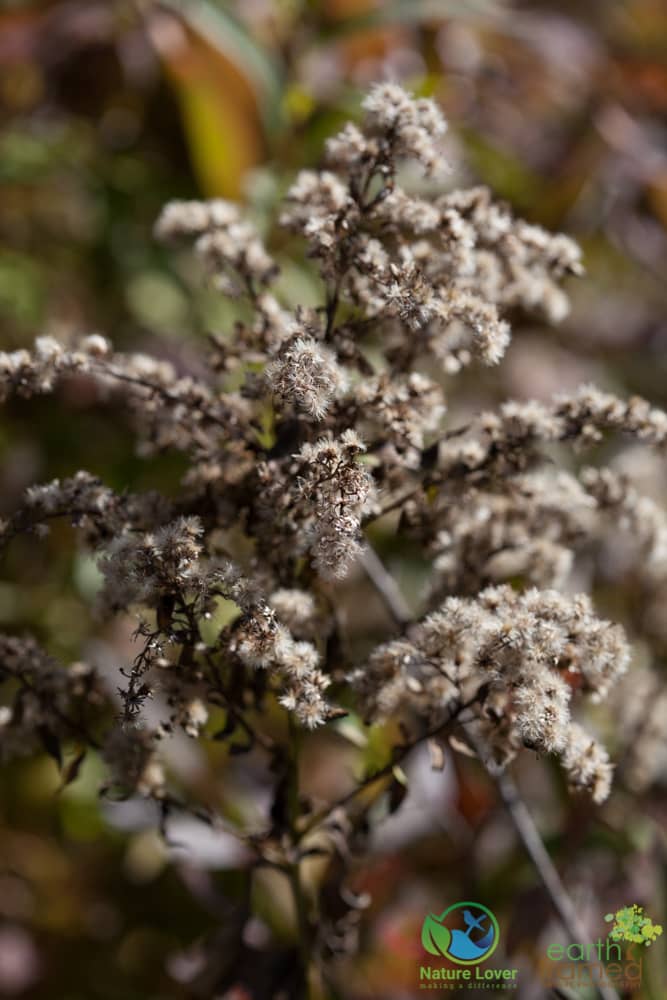
Goldenrod can be found throughout the park, where the habitat allows it and here you can see it has completely gone to seed.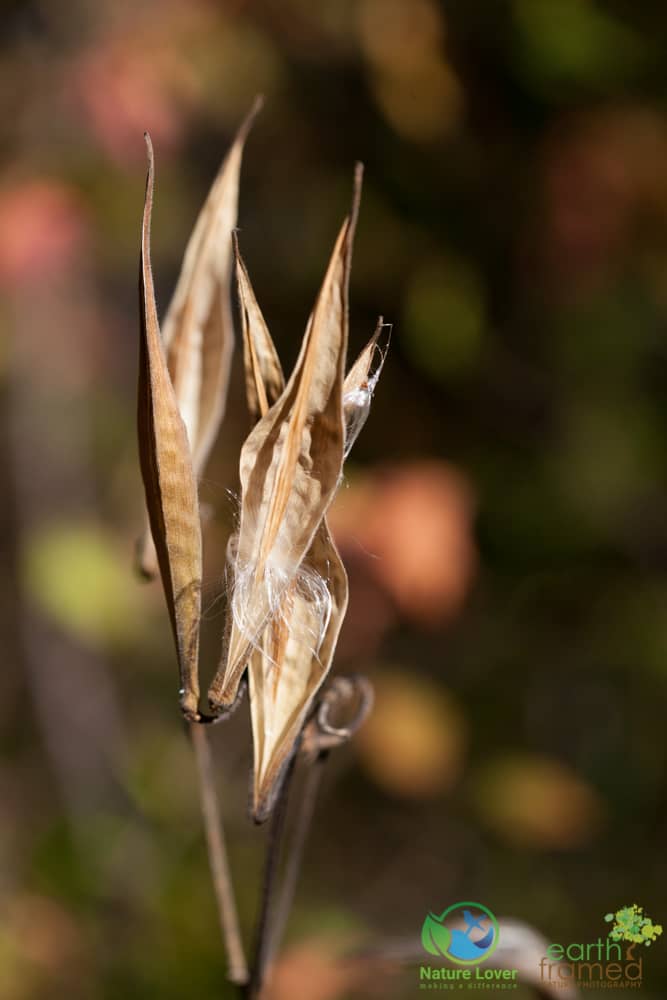
In an open area on Riverside Trail we found milkweed pods and other wildflowers basking in the sunlight.
The Pinery has so much to offer so many different people. So whether you want to go hiking, kick back by a fire or spend the day at the beach, the Pinery has that and so much more to get you outside and loving nature.


